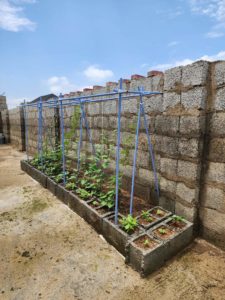Shell’s $5 bn Bonga North development on table for 2024 FID

![]()
- Bonga FPSO to tie-in new output

Sopuruchi Onwuka
The Nigerian deepwater petroleum play is set to witness increased output as the key multinational players in the country drift from onshore and shallow water operations to more rewarding deepwater exploration and production.
Shell Nigeria Exploration and Production Company (SNEPCO) Limited which deployed a production floater in the operated former Oil Mining Lease (OML) 118 in the deepwater terrain in 2005 has declared intention to optimize the facility with Bonga North satellite field development.
Managing Director, Mrs Eloni Aiboni, stated at the ongoing Sub-Saharan African International Petroleum Exposition and Conference (SAIPEC) in Lagos that the final investment decision (FID) on Bonga North development is expected by the end of the year.
The $5.0 billion or N7.5 trillion project, she said, would lead the company’s investment outlook in the immediate to medium term. Other projects mapped out by the company include five conventional gas developments that would enable the company meet its supply obligations to the Nigerian Liquefied Natural Gas (NLNG) Limited and the domestic market.
Mrs Aiboni stated that Bonga North development would increase output from the oil block by some 120,000 barrels per day at peak production via a tie-back channel to the existing floating production, storage and offtake (FPSO) vessel operating on the Bonga Main oilfield since 2005.
Bonga North is part of cluster discoveries made by Shell in 2005 in former OML 118 converted from former Oil Prospecting Lease (OPL 212P) in with water depth of around 3,346 feet.
The field is originally scheduled to start commercial production in 2025 after an FID this year. Output is forecast to peak in 2026, and the field is expected to continue producing until it reaches its economic limit in 2063.
With current production from Bonga Main and Bonga Northwest currently at 120,000 barrels per day, the Bonga North development is expected to boost production from the FPSO to a peak of 240,000 barrels per day if the project reaches commissioning by 2025 as scheduled. Production decline at Bonga Main is also expected to continue in the period.
The Oracle Today reports that Bonga North which has been on Shell’s project table for some while entails an all-subsea deep-water scheme involving some17 production, water injection and gas lift wells. Wellhead output is to be tied back to existing 225,000 barrels per day floater currently active in proximate Bonga Main oilfield in the same block.
Shell operates the block with 55 percent commercial interest on behalf of its partners including ExxonMobil’s Esso Exploration & Production Nigeria (Deepwater) Limited which holds 20 percent stake, Total E&P Nigeria Limited with 12.5 percent, and Nigerian Agip Exploration Limited which retains the remaining 12.5 percent interest. Operations in the block are governed by a production sharing contract with the Nigerian National Petroleum Company Limited which is the concessionaire.
Analysts predict that continuous maintenance and upgrade of the Bonga Main FPSO will prove a cost saver for full development of nearby fields, including the Bonga Southwest and Aparo. Disagreement between the NNPC Limited and Shell over the development model has kept Bonga Southwest development project off the table for over a decade.
Earlier in 2014, Shell had tied-back the Bonga Northwest satellite field to the FPSO to bring in additional 40,000 barrels per day of production.
Bonga Northwest development mainly consisted of four producers and two water injectors and the output from subsea facilities is transported by an undersea pipeline to the existing Bonga FPS0.
The 300-metre long FPSO held in place by 500-tonne anchors linked by 20km of mooring lines has remained resilient but with huge maintenance cost which comes regularly after every four years. Shell has continued to hype the significance of the costly maintenance works as the floater as its key marker of operating efficiency, pointing at upgrades that elongate the facility lifespan and build capacity for satellite field tie-ins. The company recently celebrated the floater’s billionth barrel production milestone.




